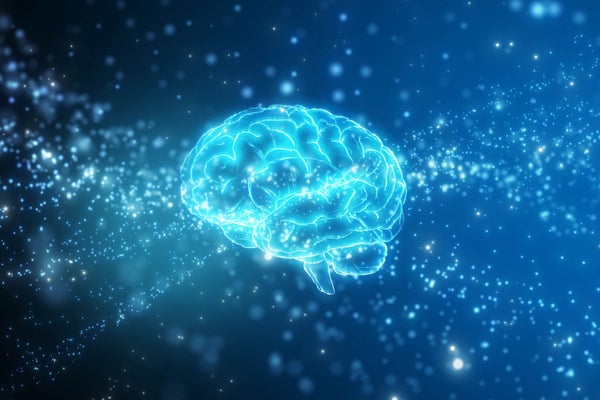This article was published in Scientific American’s former blog network and reflects the views of the author, not necessarily those of Scientific American
If you have seen the 2018 documentary Free Solo, you will be familiar with Alex Honnold. He climbs a rock face without protective equipment of any kind in treacherous landscapes where, above about 15 meters, any slip is generally lethal. Even just watching him pressed against the rock with barely any handholds makes me nauseated. In a functional magnetic resonance imaging (fMRI) test with Honnold, neurobiologist Jane Joseph found there was nearly zero activation in his amygdala. This is a highly unusual brain reaction and may explain why Honnold feels no threat in free solo climbs that others wouldn’t dare attempt. The amygdala plays an important role in our legitimate fears but also in our unconscious biases.
Having spent many years researching unconscious bias for my book, I have realized that it remains problematic to pinpoint as it is hidden and is often in complete contrast to what we think we believe. Neuroimaging research is beginning to give us more insight into the formation of our unconscious biases. Recent fMRI neuroscience studies demonstrate that people use different areas of the brain when reasoning about familiar and unfamiliar situations.
The neural zones that respond to stereotypes primarily include the amygdala, the prefrontal cortex, the posterior cingulate and the anterior temporal cortex; they are described as all “lighting up like a Christmas tree” when stereotypes are activated (certain parts of the brain become more activated than others during certain tasks). People also use different areas of the brain when reasoning about familiar and unfamiliar situations. When we meet someone new, we are not merely focusing on our verbal interaction.
On supporting science journalism
If you're enjoying this article, consider supporting our award-winning journalism by subscribing. By purchasing a subscription you are helping to ensure the future of impactful stories about the discoveries and ideas shaping our world today.
Within a few seconds, we turn behaviors into neural signals with identifiable information about the person to form an impression of them, while our prefrontal cortex simultaneously monitors neural information from our five senses, focusing us on social norms or personal preferences. So, while we are evaluating a person, we are also assigning them certain labels and stereotypes. But we are not aware of this, because the prefrontal cortex can engage in this outside our conscious awareness. These decisions are taken on a subconscious level, before we go into the more conscious, slow and controlled processing.
The amygdala is likely to activate as we walk down an unfamiliar dark alleyway and hear unexpected sounds or see a stranger walk toward us. It causes us to make assumptions about the threat level of the situation. We are likely to feel a flood of emotions as our heart starts beating faster and our palms become sweaty. Evolutionarily, humans are primed to respond to any notion of threat to ensure fitness and survival, so this kind of response is crucial. This all happens without any conscious reasoning or effort. It then takes explicit engagement from the prefrontal cortex, which gives out the message to our amygdala that all is under control and there is nothing to worry about, that perhaps that stranger is a neighbor, and that the sound we heard is possibly only an owl.
Our conscious brain does not have the opportunity to interpret all the information that we see, so our initial instincts are less likely to be based on fully processed interpretations and often include biases of some kind. As time passes, our socialization and personal memories and experiences produce unconscious biases and apply them while the amygdala labels and categorizes incoming stimuli efficiently and unconsciously, leading to people rapidly categorizing others as “like me” and “not like me” and consequently “in-group” or “out-group.” This, here, is the root of prejudice and discrimination.
Research using fMRI has given us an insight into how we respond to biases at a neural level and how intergroup prejudices activate areas of our brain associated with threat and fear. It has also given us more insight into the way we form in-group favoritism and associations and how negative out-group biases are even more prominent than in-group empathy. We respond more strongly to negative news and information than to positive stimuli.
Results from fMRI show that when individuals see facial images of people of an ethnic background different from their own, it often activates the amygdala more than seeing people of the same ethnicity. The way we respond to different accents can also be explained by amygdala response to in- and out-group memberships. Whereas repetition of our own accent elicits an enhanced neural response, repetition of another group’s accent results in reduced neural responses.
Neuroplasticity is one of the major breakthroughs in neuroscience: we now know that different short- and long-term experiences will change the brain’s structure. Social attitudes and expectations such as stereotypes can change how the brain processes information, and so brain-based differences in behavioral characteristics and cognitive skills change across time, place and culture. This means that our unconscious biases are not wired into us. They are learned through our experiences and hence can also be unlearned.
The results from these studies are not foolproof, and the limitations of fMRI should be understood and acknowledged. To understand the underlying neural landscape of cognitive biases better, we need to ensure that the absence of activity in a brain region does not necessarily imply that it is not involved in the creation or reinforcement of a specific bias. I believe, however, that it would be of immense benefit if we could translate knowledge about the neurobiology of our underlying behavior into designing interventions for addressing bias, especially that which generates stigma and discrimination.
